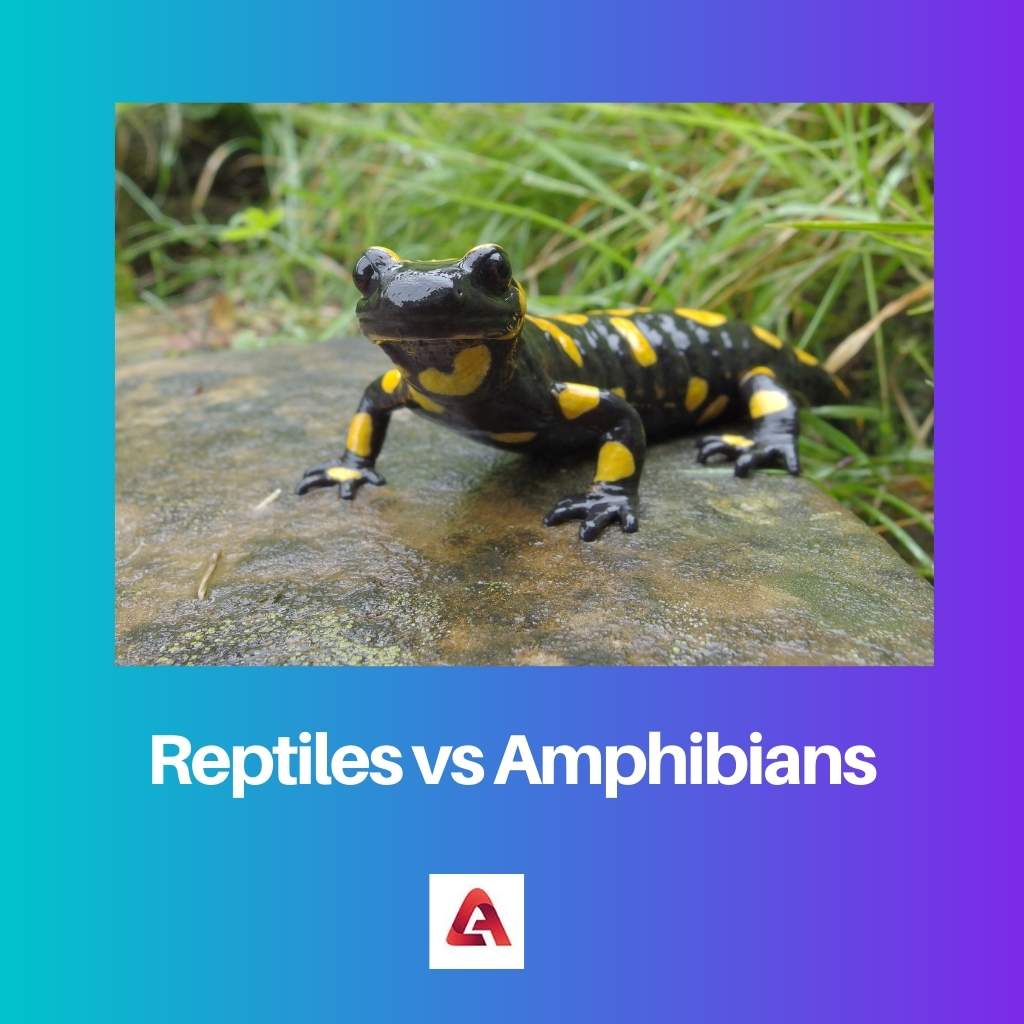Amphibians were creatures with two lives. Insects may survive both on land and in the water. These have such permeable skin that has to be kept wet.
Amphibians also deposit their eggs in water, and their larvae possess lungs to help them live in the water. Only after they are completely developed do they travel onto land.
Reptiles, on the other contrary, having successfully been able, can simply live on the land. These are viviparous, which means that they breathe using their lungs. Scales cover their heads, which help them retain moisture and defend them from predation.
While amphibians and reptiles, in ancient times, families of mammals (animals with backbones), might share some similarities but vary in biology, development, and life cycle in a number of fundamental ways.
Key Takeaways
- Reptiles have scaly, water-resistant skin and lay hard-shelled eggs.
- Amphibians possess moist, permeable skin and lay soft, gelatinous eggs.
- Reptiles are more suited to dry environments, whereas amphibians require moist habitats.
Reptiles vs Amphibians
The difference between Reptiles and Amphibians interacting with water is one distinction. According to the Missouri Department of Conservation, amphibians require water in their environment since they spend at least part of their life cycle in water. Furthermore, the majority of amphibians lay their eggs in water. On the other hand, reptiles would not have to spend a significant portion of their life in water, even though they frequently live near water and spend time in it.

The names reptile and amphibian were used interchangeably, with the French preferring reptile (from Latin repere, ‘to crawl’).
Josephus Nicolaus Laurenti was the first to use the name Reptilia to describe a larger group of reptiles and amphibians that were essentially the same as those found in the genus Reptilia.
Amphibians are tiny animals that really can exist without water or a wet environment. Frogs, toads, salamanders, and newts are all members of this group.
Despite their extremely thin skin, they can all breathe and absorb water. Amphibians have unique skin glands that generate proteins that are really beneficial to them.
Comparison Table
| Parameters of Comparison | Reptiles | Amphibians |
|---|---|---|
| Reproduction | Oviparity is a condition in which maternal eggs have a protective case that shields the fetus. | Ovoviviparity is indeed a condition in which embryos inside eggs remain in the woman’s body until hatching. |
| Habitation | The majority of them reside on land, although there are few outliers, such as snakes, which have certain species that also dwell underwater. | The larvae occur inside of an aquatic environment, and the adult stage occurs on land. |
| Circulatory system | It has 3 chamber heart with a partial septum | It has 3 chamber heart |
| Feet | Reptiles are having limbs for running and swimming | Amphibians are having webbed feet for the swimming |
| Eggs | The eggs are covered with help of a protective covering | Their eggs have been covered with the gel |
What is Reptiles?
Reptiles belong to the class, a paraphyletic group that includes all amniotes save synapsids (mammals and their extinct ancestors) and Aves (birds). Turtles, crocodilians, snakes, amphisbaenians, lizards, tuataras, or related ancient cousins belong to this class.
Eagles were classified separately from reptiles in the old Linnaean classification system. Crocodilians, on the other hand, are more closely linked to birds than to other extant reptiles, therefore contemporary cladistic categorization methods include birds inside Reptilia, thereby redefining the word as a genus.
The very first documented proto-reptiles emerged from sophisticated reptile morph tetrapods that grew progressively suited to living on the dry ground approximately 312 million years ago during the Carboniferous epoch.
Hylonomus, a tiny and apparently lizard-like animal, was the first known eureptile (“genuine reptile”).
The two biggest reptile lineages, Archosauromorpha (crocodilians, birds, and kin) and Lepidosauromorpha (lizards and kin), split near the very end Permian era, according to genomic and archaeological evidence.
Aside from extant reptiles, several other groups have become extinct, sometimes as a result of major extinction events. During the Cretaceous–Paleogene period, in especially,

What is Amphibians?
Amphibians are tetrapod animals that are ectothermic and belong to something like the class Amphibia. Lissamphibia is the name given to all live amphibians.
They live in a broad range of environments, with several inhabiting terrestrial, fossorial, nocturnal, or aquatic settings. As a result, most amphibians begin their lives as larvae in water, although certain species have evolved behavioural adaptations to avoid this.
The larvae having gills metamorphose into adult air-breathing species with lungs in most cases.
Amphibians utilize the skin as little more than a secondary respiratory surface, and some tiny terrestrial salamanders and frogs do not have lungs and rely only on their skin for respiration.
They resemble lizards on the surface, but reptiles, like mammals and birds, are amniotes, which means they don’t need water to reproduce.
Amphibians are ecological indicators due to their complicated reproductive demands and porous skins; amphibian populations have been declining dramatically for several species throughout the world in recent decades.

Main Differences Between Reptiles and Amphibians
1. Reptiles will live on land, but amphibians live on land and water.
2. Reptiles breathe from the lungs while Amphibians breathe from the lungs as well as Gills
3. Reptile’s skin is very hard and dry, but the amphibians’ skin is very smooth
4. Reptiles are viviparous animals, but amphibians are oviparous animals.
5. Reptile’s fertilization is internal, but amphibian’s fertilization is external.





